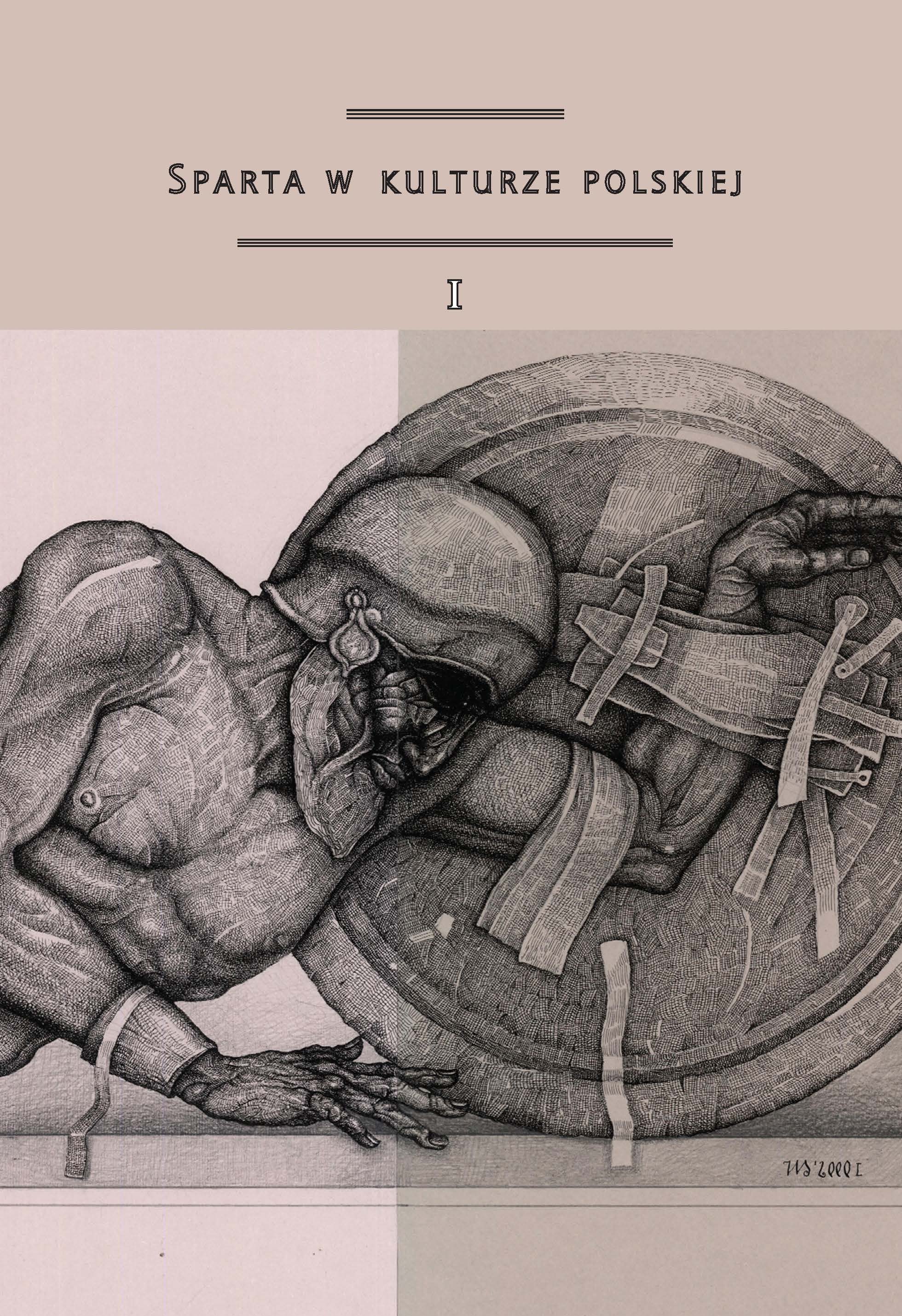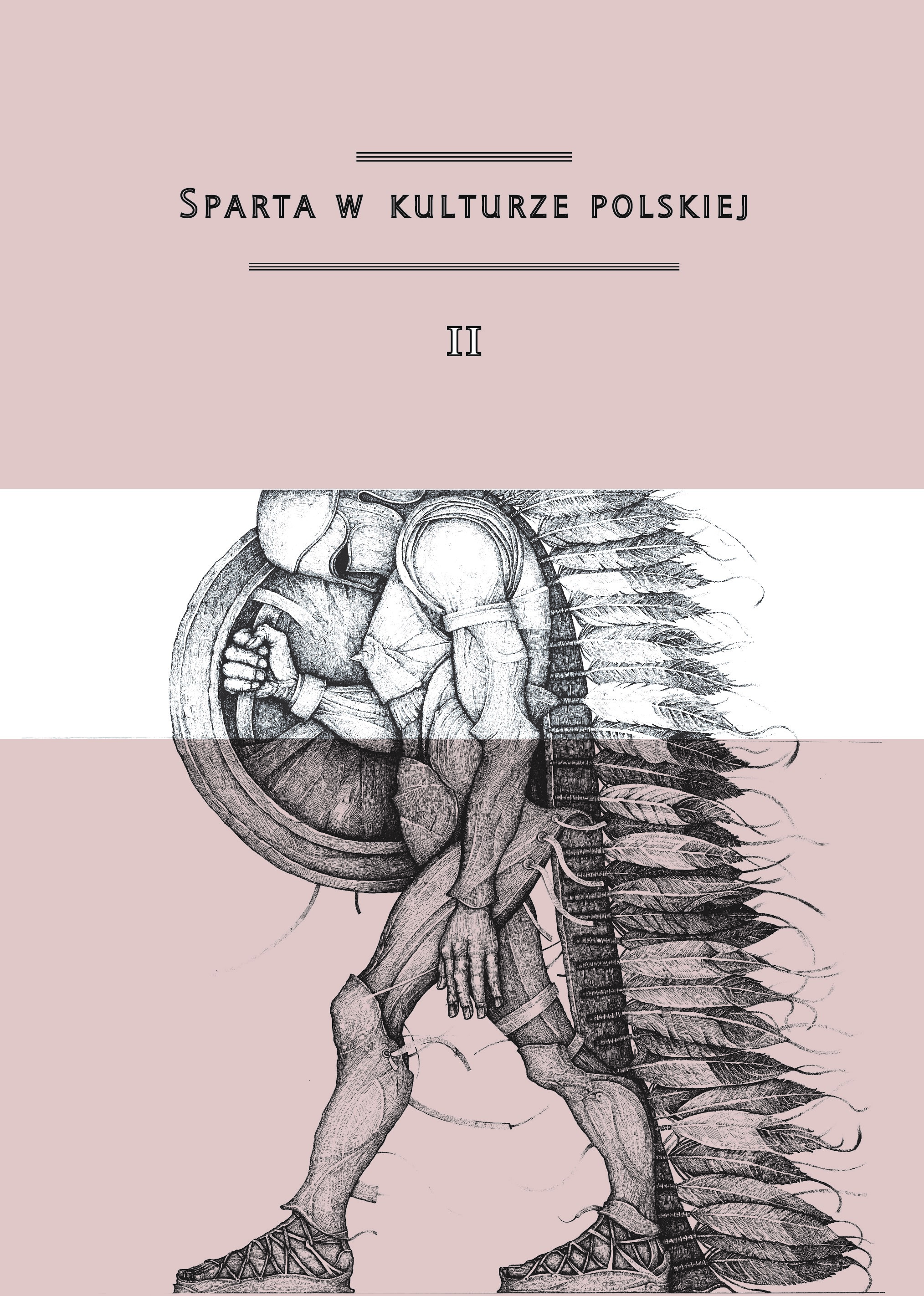Volume two of Sparta w kulturze polskiej [Sparta in Polish Culture] completes our presentation of the results of research conducted at the University of Warsaw’s Faculty of ‘Artes Liberales’ in the inter-university project Sparta in Polish Literature and Culture from the Old Polish Period to the 20th Century: Between the Reception of Greek Heritage and the Search for National Identity (financed with National Science Centre (NCN) funding). The project’s aim was to explore the vision of Sparta in Polish literature and culture from the earliest times – the Old Polish period – all the way to the present era. The project covered all of the Polish literary periods and the most important traces of the Polish reception of Sparta, considered in the broad context of Polish and European culture.
The two volumes of Sparta w kulturze polskiej constitute the first monographic study on this topic, enabling the Polish reception of Spartan themes to be reconstructed and its distinct and unique character to be described against a European background. At the same time, it needs saying that we have not exhausted or closed this subject matter, but only outlined issues that are sure to inspire researchers to conduct further studies in this area.
Of course, the most important question that has emerged in the context of our several-year research concerns the character of the Polish reception of Sparta, where the term “reception of Sparta” refers to a number of issues from the realms of literature and the arts, history of political thought, and anthropological and didactic concepts that recur in the history of European culture, forming its main intellectual, anthropological, social and political trends. What image of the Polish reception of Sparta emerges from our research and the two-volume publication presenting the results? What are the unique features of the Polish vision of Lacedaemon? Can we formulate such a hypothesis on the basis of these studies? Which of the “Spartan” themes that comprise the European myth of Sparta have dominated the Polish image of this city-state? Was there continuity in the Polish reception of Sparta in the pre-partition period and during the partitions? Did the 20th century in any way revise the earlier Polish myth of Sparta?
Both volumes of Sparta w kulturze polskiej provide extensive material for deliberation on these questions, and we believe that the monographic character of our publication provides some answers as well. It needs adding, however, that this is a special kind of monograph, featuring multiple voices and many perspectives, since we have done our best to consider the “Polish Sparta” from many different viewpoints, both in the sense of the individual approaches of the researchers, who represent different areas of knowledge and different methodologies, and with respect to different contexts, which we have summoned in order to see this Polish uniqueness against a European background even more clearly. We value the kind of monographic work that does not paint a monolithic image and does not arise from a one-sided approach, but gives proper consideration to the complexity and multidimensionality of the humanist reality constantly being uncovered and involved in different interpretive orders. Thus presented, the Polish reception of Sparta functions within tensions long established in the Polish humanities and defining different understandings of Polish culture and its history.
Another opposition affecting the image of the “Polish Sparta” is the essentially unresolvable debate over the continuity/discontinuity of the culture of free Poland and Poland in bondage. The present volume contains different positions on this issue too: from those underlining the nation’s completely different cultural situation after the loss of freedom as a result of partitioning, to those highlighting the continuity of cultural tradition.
A different tension influencing the Polish image of Sparta stems from the more general identification of the predominant model in Polish culture: is it non-Romantic or Romantic? Is Romanticism the most important formation for Polish culture and mentality, is it the exemplar that has defined models of national behaviours? Or, perhaps there exist, and are still relevant today, cultural models that are alternative in relation to Romanticism, especially those which originated from the pre-partition world (let us add: and are concretised and named in various ways, e.g. classicism, Sarmatism…)? In this case we are going back to old disputes over the most important formation that decides about the peculiarity of Polish culture… These are essentially unresolvable disputes, but they have a decisive impact on our choice of perspective in viewing humanist content, including the reconstruction of the image of Sparta. In this order, the importance of Agamemnon’s Tomb, for example, is unsurpassed, while Słowacki’s deep, almost organic Hellenism has an incredible capacity to radiate to and influence successive generations.
How does the Polish reception of Thermopylae relate to the Polish reception of Sparta?
Contents of Volumes:
Contents of Volume I
- Ryszard Kulesza, Two Spartas. An interview with Prof. Ryszard Kulesza (Dr Przemysław Kaniecki)
- Anna Grześkowiak-Krwawicz, The image of Sparta in the political thought of the Polish -Lithuanian Commonweath
- Elżbieta Powązka, Spartan themes in the Baroque school theatre of St. Anne’s School in Cracow
- Ewa Róża Janion, Sparta in the accounts of travellers to Souli and historians of Souli in the 19th century
- Marcin Leszczyński, English beef-steak and Spartan soup. Byron and Sparta
- Jerzy Borowczyk, Lacedaemon’s example. Sparta in the eyes of the Philomaths and Decembrists (with references to Polish classicism at the turn of the 18th and 19th centuries)
- Maciej Junkiert, The reception of Spartan history in the first decades of the 19th century. The Polish perspective: Groddeck, Lelewel, Mickiewicz
- Michał Kuziak, Adam Mickiewicz and Sparta. A troublesome legacy
- Maria Kalinowska, Sparta in the “Greek” works of Juliusz Słowacki and Stanisław Wyspiański
- Arkadiusz Bagłajewski, Sparta in Romantic Polish poetry (1831-1863). Motifs, reminiscences, images
- Ewa Owczarz, Eliza Orzeszkowa’s tale of Leonidas. (Gloria victis compared to the writer’s other works with ancient themes)
- Jerzy Speina, Spartan reminiscences in 20th-century Polish literature
- Magdalena Bauchrowicz-Kłodzińska, Czesław Miłosz’s “Peloponnesian war” An ancient allusion as an element in the debate with the Tyrtaean ethos
- Grażyna Halkiewicz-Sojak, Zbigniew Herbert’s Sparta
- Alicja Kordos, Przemysław Kordos, Polish travellers in Sparta
- Ryszard Kulesza, Thermopylae – in Poland and around the world. A reconnaissance
- Damian Kaja, 300 opposite/against masses? The space of Thermopylae in Polish and world cinema (in the context of trends of popular culture)
- Kaja Dybowska, Jacek Raszewski, Sparta in the propaganda of the Metaxas regime (1936-1941)
- Jerzy Axer, Sparta Polonorum. Paradoxes of continuity and discontinuity
The first volume was edited by Małgorzata Borowska, Maria Kalinowska, Jerzy Speina, and Katarzyna Tomaszuk.
Contents of Volume II
- Before the Nineteenth Century: Shaping the Stereotype of Sparta in Old Polish Literature. An Interview with Alina Nowicka-Jeżowa by Przemysław Kaniecki
- Joanna Partyka, In Search of Lacedaemon in Old Polish Texts. A Reconnaissance
- Ilias Wrazas, Reflections on the Reception of Ancient Athens and Sparta
- Małgorzata Borowska, Leonidas and Themistocles. Sparta and Athens in Nineteenth-Century Greek Historical Tragedy. An Overview
- Radosław Piętka, Sparta vs. Athens, Sparta vs. Rome, Sparta vs. Poland… The Idea of Cultural Parallelism in the Past and Present Reflections on Sparta
- Elżbieta Wesołowska, Helen of Troy in Ancient Tradition and Polish Literature
- Renata Krystyna Majewska, The Ideal of a Spartan Woman in the Opera Matka Spartanka by Franciszek Kniaźnin
- Mirosława Radowska-Lisak, Tyrtaeism in Musketeer Style. Władysław Sabowski’s Nad poziomy. Powieść z roku 1863
- Iwona E. Rusek, The Ritual of “Eternal Man” in Termopile polskie of Tadeusz Miciński and Noc Listopadowa of Stanisław Wyspiański
- Marta Dąbrowska, Spartan Tropes in Stanisław Vincenz’s “Greek Essays.” Notes from Reading
- Elżbieta Kiślak, Sparta in the Greek Journey of Maurice Barrès
- Przemysław Kordos, On the Spartan Origins of the Maniotes
- Maria Kalinowska, More on the Maniotes… A Reading of Adam Mickiewicz’s Translation of The Giaour and Cyprian Kamil Norwid’s Epimenides
- Mirosław Piotr Kruk, The Reception of Sparta in European Art. A Reconnaissance
- Izabela Piskorska, The Spartan Topic in European Painting of the Nineteenth Century – Characters, Themes, Places. A Reconnaissance
- Ewa Róża Janion, Ludmiła Janion, Does the Phalanx of Healthy Men Represent Normative Society? Spartan ideal and contemporary visions of Sparta in perspective of Masculinity Studies
- Szymon Wróbel, Thucydides’s War and the Modern World.
The second volume was edited by Małgorzata Borowska, Maria Kalinowska, Jerzy Speina, and Damian Kaja.
Cover images from both volumes – engravings by Michał Hrisulidis

